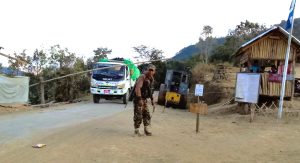Myanmar military chief Min Aung Hlaing admitted in February 2023 that the regime only has full control of 198 of Myanmar’s 330 townships. Martial law has been imposed in 50 townships across Yangon, Mandalay, Sagaing and Magwe regions, as well as Chin and Kayah states, where the junta is fighting for control with resistance forces. In other areas, the junta has no meaningful presence at the moment. These are the regions considered “liberated zones” by the opposition, where an alternate administration, including education and health facilities, have been erected by the National Unity Government (NUG) and local groups.
The military regime’s position in the ongoing war has further deteriorated in the nine months since the junta chief’s admission. In late October, Operation 1027 was executed by a conglomerate of three ethnic armed organizations (EAOs) called the Brotherhood Alliance. The military offensive swept across northern Shan State, resulting in the capture of 126 military bases, 13 towns, the highways leading to the China-Myanmar border towns of Muse and Chinshwehaw, and an entire battalion. Sooner thereafter, in mid-November, another military offensive began in Rakhine State.
Some among the resistance groups active along the India-Myanmar border region are optimistic about the operation being extended to their areas in Sagaing Region and Chin State, which have been among the most affected zones in the conflict. True to their expectations, regime forces were driven out of Khampat early in November by a combined offensive executed by several groups.
Between January and March, The Diplomat covertly visited Haimual-New Haimual, Thantlang, Kalay, and Tamu in Chin State and Sagaing Region to gather information on the Spring Revolution. The conflict has developed its own characteristics in each locale, with the rebel groups and the military also adopting diverse tactics to clinch a victory. There are liberated zones where the junta does not have a presence and also areas where both sides are engaged in brutal contests for control of more territory.

































